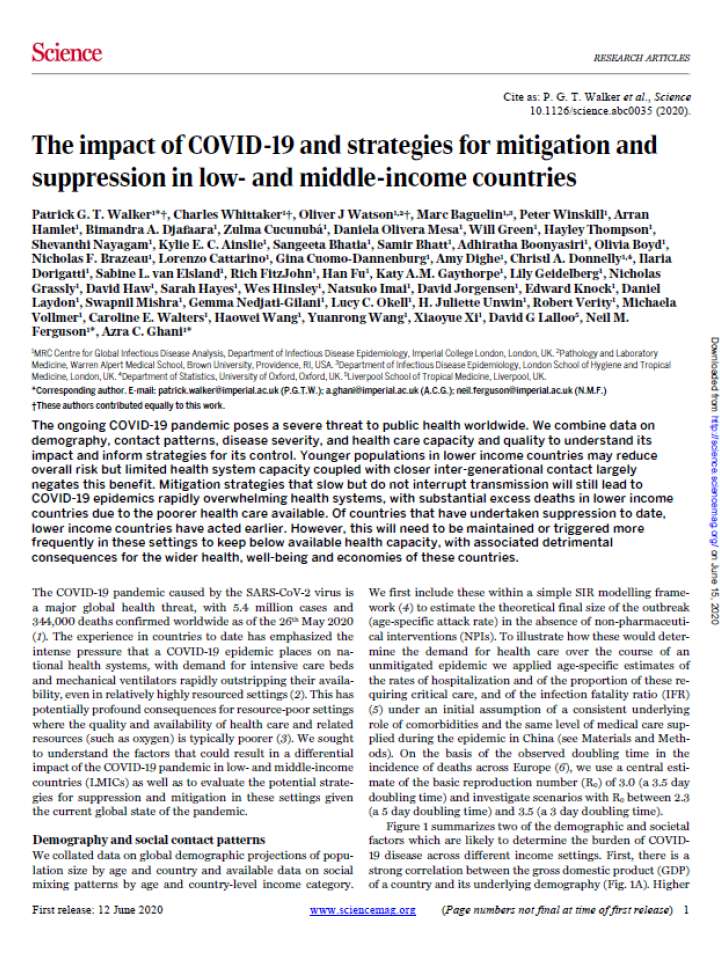The impact of COVID-19 and strategies for mitigation and suppression in low- and middle-income countries
The results presented here illustrate the potential impact of the coronavirus disease 2019 (COVID-19) pandemic in low-income countries (LICs) and low-middle-income countries (LMICs) compared to the epidemics that have occurred to date in upper-middle-income countries (UMICs) and high-income countries (HICs).
This study's results highlight the difficult decisions countries are faced within the coming weeks and months irrespective of region or income status. Given the likely worse prognosis of severe COVID-19 cases in settings with weaker health systems coupled with the higher vulnerability of developing economies to the negative effects of stringent non-pharmaceutical interventions (NPIs), the trade-offs lower-income countries face are complex given the ongoing uncertainty in the most appropriate and effective exit strategies.
Many lower-income countries have acted while transmission remains at low levels which is likely to have substantially slowed the spread of the virus. In the absence of a vaccine, all governments are likely to face challenging decisions around intervention strategies for the foreseeable future. However, the still relevant counterfactual of a largely unmitigated pandemic clearly demonstrates the extent to which rapid, decisive and collective action remains critical to save lives globally.
Explore further
